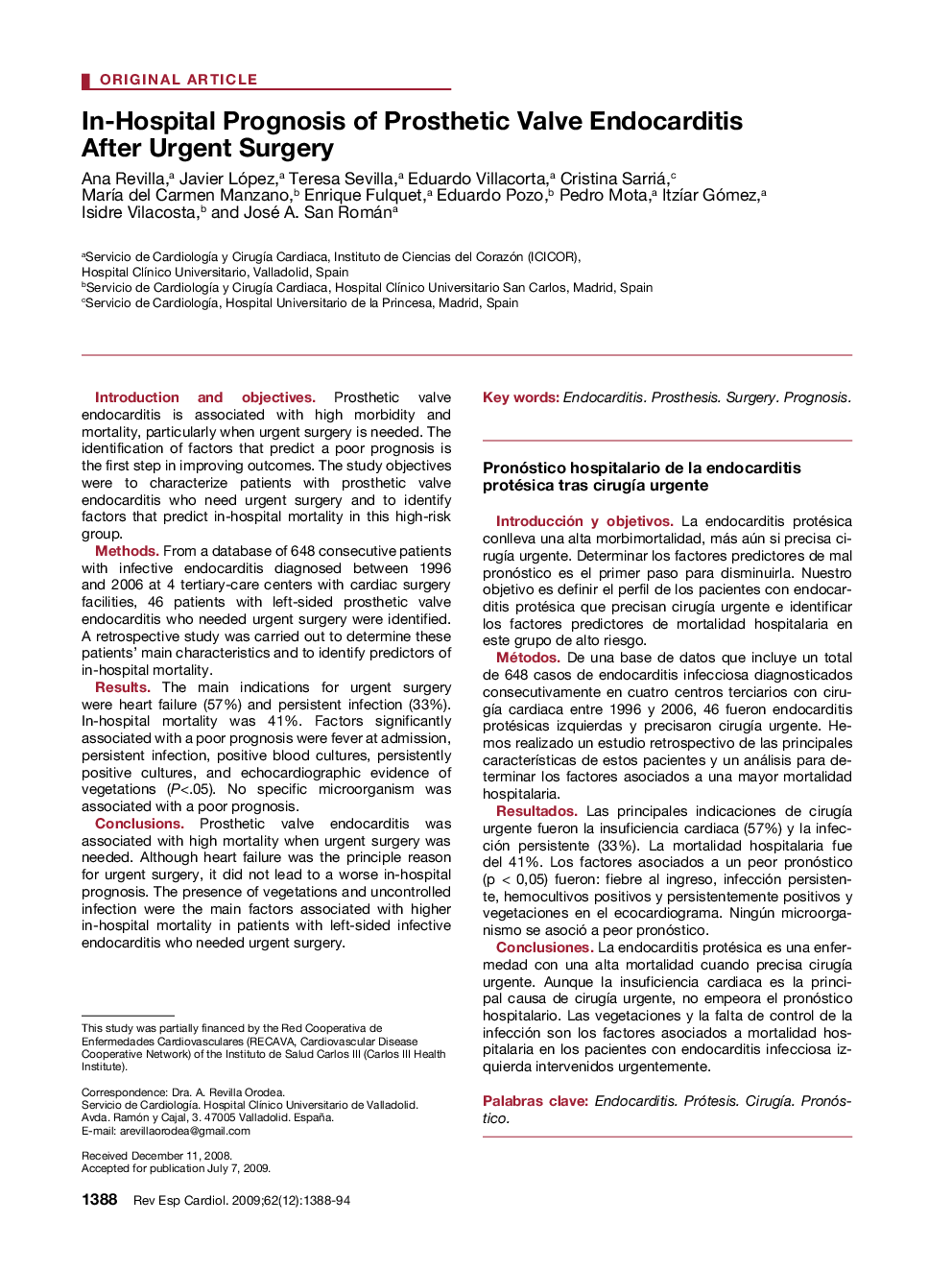| Article ID | Journal | Published Year | Pages | File Type |
|---|---|---|---|---|
| 3018828 | Revista Española de Cardiología (English Edition) | 2009 | 7 Pages |
Introduction and objectivesProsthetic valve endocarditis is associated with high morbidity and mortality, particularly when urgent surgery is needed. The identification of factors that predict a poor prognosis is the first step in improving outcomes. The study objectives were to characterize patients with prosthetic valve endocarditis who need urgent surgery and to identify factors that predict in-hospital mortality in this high-risk group.MethodsFrom a database of 648 consecutive patients with infective endocarditis diagnosed between 1996 and 2006 at 4 tertiary-care centers with cardiac surgery facilities, 46 patients with left-sided prosthetic valve endocarditis who needed urgent surgery were identified. A retrospective study was carried out to determine these patients’ main characteristics and to identify predictors of in-hospital mortality.ResultsThe main indications for urgent surgery were heart failure (57%) and persistent infection (33%). In-hospital mortality was 41%. Factors significantly associated with a poor prognosis were fever at admission, persistent infection, positive blood cultures, persistently positive cultures, and echocardiographic evidence of vegetations (P<.05). No specific microorganism was associated with a poor prognosis.ConclusionsProsthetic valve endocarditis was associated with high mortality when urgent surgery was needed. Although heart failure was the principle reason for urgent surgery, it did not lead to a worse in-hospital prognosis. The presence of vegetations and uncontrolled infection were the main factors associated with higher in-hospital mortality in patients with left-sided infective endocarditis who needed urgent surgery.
Introducción y objetivosLa endocarditis protésica conlleva una alta morbimortalidad, más aún si precisa cirugía urgente. Determinar los factores predictores de mal pronóstico es el primer paso para disminuirla. Nuestro objetivo es definir el perfil de los pacientes con endocarditis protésica que precisan cirugía urgente e identificar los factores predictores de mortalidad hospitalaria en este grupo de alto riesgo.MétodosDe una base de datos que incluye un total de 648 casos de endocarditis infecciosa diagnosticados consecutivamente en cuatro centros terciarios con cirugía cardiaca entre 1996 y 2006, 46 fueron endocarditis protésicas izquierdas y precisaron cirugía urgente. Hemos realizado un estudio retrospectivo de las principales características de estos pacientes y un análisis para determinar los factores asociados a una mayor mortalidad hospitalaria.ResultadosLas principales indicaciones de cirugía urgente fueron la insuficiencia cardiaca (57%) y la infección persistente (33%). La mortalidad hospitalaria fue del 41%. Los factores asociados a un peor pronóstico (p < 0,05) fueron: fiebre al ingreso, infección persistente, hemocultivos positivos y persistentemente positivos y vegetaciones en el ecocardiograma. Ningún microorganismo se asoció a peor pronóstico.ConclusionesLa endocarditis protésica es una enfermedad con una alta mortalidad cuando precisa cirugía urgente. Aunque la insuficiencia cardiaca es la principal causa de cirugía urgente, no empeora el pronóstico hospitalario. Las vegetaciones y la falta de control de la infección son los factores asociados a mortalidad hospitalaria en los pacientes con endocarditis infecciosa izquierda intervenidos urgentemente.
